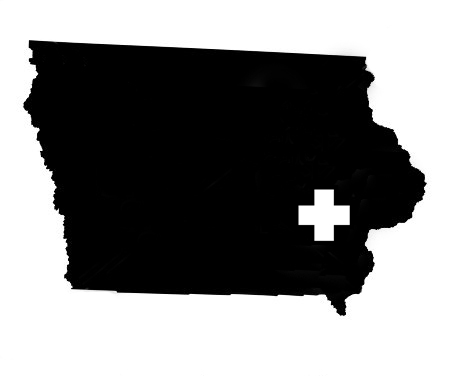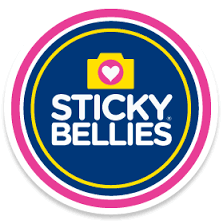Home Cleanse Day 2: Purge
I want to acknowledge that I understand you are busy. My spouse is home infrequently (sound familiar to you?), I have two kids and a full-time job. My goals are basically to work, cook, tame children, poke around on Instagram, purge things, and do crafts in my basement. Your list probably looks different from mine. But, if you decide to care about this, I am optimistic you can find some time, at least in the short term. If my cleaning/purging task is something I can do with my kids helping me (and I use the word “helping” very loosely), I try to do it then. Otherwise, I do it during a conference call or after the kids are asleep. If you truly don’t have time for this right now, I totally believe you. You don’t need to justify why now is not the time. That is OKAY. Everyone has their own goals and needs. You probably do other awesome things I don’t do, like go for runs or read books. I finally stopped pretending that I read books. PSA to all my friends: I don’t read books.
I’ve organized this by category, but choose the order that is right for you. It goes without saying that this is what works for me and my family’s lifestyle, but you may have your own preferences and exceptions that you should respect and incorporate to make this work for you. This is intended for all family sizes, with or without children.
Clothing and linens
For some reason, this seems to be the easiest place to start. If the clothing seems too daunting, start with your linen closet. Dump it all out and consider what categories belong in this closet. For me, it’s towels, sheets, blankets, and medicine.
First, consider the number of people in your household and how often you do laundry to calculate the ideal number of bath, hand, and wash towels. Beach towels can be one towel per person. Anything beyond that number can go. If space allows, a few “gym” or “trash” towels can be here in a separate spot. If space doesn’t allow but you really want to keep some trash towels, consider keeping some rags/trash towels where you store your cleaning products or in your garage.
Sheets should be one to two sets per bed. I keep one spare twin set to lay on little makeshift beds for kids and visitors if needed, but that’s our only extra pair. Blankets are your decision based on the temperature variations in your home throughout the year, but take a good hard look at which ones you are really using and which ones just get pulled out every couple years, which no one would miss or ask about if they were gone.
Anything that is gross, stained, or needs mending, fix it now or fix it never. If you aren’t going to fix it this weekend, you never will and it will just clutter your thoughts and your to-do list. Get it out of here. And there are good places to donate this type of stuff, so you don’t have to feel like you might as well keep it just so it doesn’t go to the landfill.
Clothing is specific to your day-to-day life, so think about what you (and your family members) tend to wear over the course of a couple weeks in a cold and warm season. Keep this frame of mind as you review. Here are my suggestions for assessing clothing items.
- As discussed yesterday, remember to pull everything out and throw it on your floor or bed for review, piece by piece.
- Review by subcategory and think about how many options you need for each subcategory. Long sleeve dress tops, long sleeve casual tops, sweaters and jackets, short sleeve dress tops, t-shirts, etc. I realize I wear t-shirts for both sleep and… not sleep… so I keep about 10. I have just a few cardigans/jackets (navy, white, black, and a workout-ish one). Figure out your needs and numbers and work backwards from there.
- Consider the practicality of the items you have. I had an epiphany and realized that I NEVER put my three-year-old in any of the buttoned pants that he has because… hello… potty training. Bye to those. Same for hooded baby items – I never put them in those because I thought they’d strangle themselves during naps or in the car seat (I have anxiety, ok?). Even though I bought some of them new and some of them were very nice gifts – see ya.
- Do you have any clothes that give you a negative thought when you see them? (examples include: “I hate that that doesn’t fit me anymore”, “Ugh, I shouldn’t have wasted my money on that, I still haven’t even worn it”, “Someone just gave me that, I really should try to wear it…”, or even “I wore that during a super terrible day that I remember every time I see this piece”) Get rid of those items. Free yourself. On the flip side, some clothes are only retained because of good memories even if they aren’t worn. If it is really special enough, ask yourself if it deserves a spot in your sentimental bin in your basement. It can live there, otherwise it can go. Examples of these types of items for our family include my husband’s favorite old t-shirt that was super gross but still sentimental for him, my kids’ baptism outfits, and a t-shirt I bought in Kenya on our honeymoon that no longer fits.
- Be selective about what you choose to keep that doesn’t currently fit or have a practical use in your life. You know your body and your goals, so take some time to reflect on what is realistic for you in this phase of your life. As for children’s clothing, this can be trickier since they grow like weeds, so consider what space you have in storage and the true worth (worth in many ways – refer to yesterday’s post about that) of the item.
- Put all the “not sure” items in a box (yes, only one “not sure” box. If you need more than one box, you’re not getting rid of enough stuff). Write the date for six months from now on that box, and put it away. If you haven’t reopened it to dig something out by then, the whole box can go.
- For all clothing that lives on a hanger, hang it up the “wrong” way (with the hook pointing towards you rather than away). Notice what is still facing the wrong way two months from now. Those can go (or be very closely scrutinized if the weather was the only thing keeping you from wearing this item). Also, keep only a handful more hangers than you need. If you have 20 extra hangers, you’ll be surprised how quickly you fill them.
Bathroom and toiletries
This one can be super satisfying and relatively quick. We’re talking about makeup, lotions, hair care, shaving needs, feminine products and perfumes. This area also houses a couple random items for our family like jewelry cleaner, electric razors and haircutting tools.
Put aside a spot or container that will be your backstock area. This is where your extra toothbrushes, shampoos, razors, etc can go. This is not an opportunity to go shop and populate your backstock. It’s just a way to process the things you already have. Moving forward, I suggest buying things just as you need them, and buying in bulk only when an excellent deal comes along or if you have a very specific favorite item that is hard to come by.
Then, you need your “keep”, “trash”, and “donate” area. The donate area in this section is generally very small, but you can always offer some gently used items to a friend or a buy-nothing/freecycle group, and unopened little travel toiletries are great to donate.
Beauty products and lotions can go if you haven’t used them in the past six months. Same goes for those situations where you always reach for Lotion #1 over Lotion #2. If you love Lotion #2, it can move to your backstock, but that’s it. Lotion #3 does not exist in your brain. Bye. Oh, and don’t forget to really scrutinize nail polishes. This usually gets overlooked.
For sanitary purposes, some makeup and personal care items are only recommended to be used for a certain length of time. I try to be mindful of these guidelines, but it really isn’t practical to replace your makeup as often as is recommended. In the interest of practicality, take mental stock of some things you love and need to keep but which are getting old. You can work towards replacing them as your budget allows, and even start a list through this process if you’d like.
Regarding travel toiletries and little hotel shampoos, get rid of most of those (these can be donated!). I recommend keeping two “sets” of little items like this. One is for guests, and one is for our own travel. Each of them lives in a little zipper bag. For me, it includes travel size shampoo, conditioner, lotion, toothpaste, laundry detergent, baby shampoo, diaper rash cream, makeup remover, and a little sewing kit.
If you are lucky enough to have a guest bathroom or kids’ bathroom with some under sink storage, you can consider keeping your backstock and travel toiletry kits here. Then, the area under your personal sink has only the things you frequently reach for. Bathroom countertop space is VERY valuable. Only something that you use every single day should be on here, and really, not even then. For us, it’s just hand soap, toothbrushes and toothpaste. Keeping these items in a very accessible drawer is just fine, too.
Kitchen
This actually isn’t as terrible as it may seem. The worst part is your junk drawer. You can save that for last.
I find the “take everything out” rule very hard to follow in the kitchen, so I bend it a bit. I generally only take out categories that have lots of “things” like small appliances, utensils, spices, and Tupperware. Your glassware and plates should be easy enough to view where they are.
This is an opportunity to assess how many of an item you really need. Even coffee mugs. I have a hard time seeing a situation where you need more than six or eight. If there’s a circumstance where you might need ten or twelve, that circumstance will likely happen only once a year or once every several years, so it’s probably not worth the space it’s taking up. Cutlery can be a set of eight or twelve, and that’s it. Beyond that, plastic cutlery for entertaining is just fine. This “how much do I really need” question is never more important than when taking a look at your Tupperware. And for the love of God, if it doesn’t have a lid or it’s stained orange, say goodbye (though a caveat here is saving a few that are missing a lid in case they help you organize small items later).
Let’s take some time to thank the workhorses that you use frequently. A big nonstick pan, a 9x13 baking dish, a coffee maker, a crock pot. Thanks, buddies. Now, let’s take a hard look at the stuff you have that only serves one purpose. The ravioli maker, ice cream maker, fondue pot, sushi roller. If this has a special place in your family and you really use it, keep it. Otherwise, it’s taking up space that your workhorse items deserve.
Entertainment items like big platters and ice buckets, assuming you truly use them often enough (at least two times a year AND it gives you the warm and fuzzies to use them), can be stored in your kitchen if space allows, but in your basement in a fairly accessible box is a good alternative. Same for flower vases and candles.
Sentimental kitchen items are very significant for some families. If it is incredibly important to you to keep full sets of china, try to work towards acquiring a china cabinet or buffet that can be on display in a dining area and out of your day-to-day use area. In my case, I had about 10 items that were sentimental but never used, including four little teensy wine glasses I used to sip water from as a kid to be fancy, one cereal bowl of my grandmother’s, and a couple wine glasses from our favorite wineries. I opted to move these into my sentimental storage in my basement.
Back to the junk drawer. I have no specific advice here except to dive in when you’re already on a roll and you’re ready to throw things away. The ultimate goal is actually to eliminate the junk drawer, but if you can’t do that, turn it into a drawer that contains items that you are likely to use often. For me, it includes a tape measure, various types of tape, pens, a notepad, and screwdrivers (scissors would be here too, but they are in my knife drawer). Importantly, think about what you look in the junk drawer for. If you can’t think of a situation where you would actually need an old bread bag tie, toss the 10 that you’ve been randomly storing. You don’t need to save everything just because “some day it may come in handy”.
As in the bathroom, the countertop is prime real estate. Only your daily use items that would be cumbersome to put away every day should live here. I advocate for no knife blocks and no utensil holders on the counter. The countertop looks much tidier without them. Consider a flat knife storage block that goes in a drawer. If you are lucky enough to have a big pantry that can accommodate your microwave, move it in there. My countertop includes olive oil, butter (yes, we’re a room temperature butter family, and I will fight you on this), the coffee maker, microwave, and toaster oven.
Now that you have the hang of this, you should apply some intense scrutiny to your spices and food. These items should come out of your fridge and pantry and sit on your countertops while you assess the situation. Expired and unused items can go, of course. Assess your potential need for a backstock area, which you may or may not need depending on your cooking habits. If you do need a backstock area, assess whether there is room in your kitchen for it, or if it needs to be in a fairly accessible storage space.
Toys
If this section does not apply to you, please have a little party for yourself in your quiet, orderly home that has lovely furniture with sharp edges and outlet plugs without plug protectors. However, if you frequently want to burn everything in your home, read on, because it means you have toys.
I should say that I have very young kids, so my toy philosophy has evolved with this consideration. Your kids may be older and/or have different needs, so consider what’s right for you.
A few things I realized that helped me purge a bunch of toys:
- My kids don’t play with toys that are out of their sight. The exception is “special” items that they aren’t allowed to do without me (like craft kits, boxes of beads, marbles).
- On that note, “special” items are way more special when they are put away in a place where only the adult can access them. The excitement builds when you offer to go get one of them, and I find that they play with that item longer than if they walked past it every day.
- There’s a difference between toys they touch because they’re there, and toys they actually enjoy. An example here would be a box of cars, train tracks, musical instruments, etc., that they seem to just dump out and peruse before moving on.
I eliminated broken toys, toys I haven’t seen them reach for in the past month, and toys that they only touch because they are there but that don’t seem to truly entertain them. Of the toys that are keep-able, they can go in one of four places: 1) on display in your play space(s), 2) out of your toy rotation (to be circled back out every 3-4 months, and in the meantime stored in the basement or a closet somewhere), 3) in your “special” place that only mom/dad/babysitter can access, and 4) in ONE box in storage of “toys to grow into”. One box. No more.
I emptied all areas that had toys that were out of sight and categorized them as above. I tried my very best to eliminate all containers and bins that keep the kids from seeing their toys. This allowed me to sell a whole wooden trunk and free up a bunch of bins for other things like cleaning products that I just purged and reorganized! Some items had to stay in a box (e.g., duplos, magnetiles). When I feel like my budget allows, I will eventually replace those with clear bins.
Décor
This one is fun because it has a big impact. You’ll go room by room here. Start by standing in whichever room you want to do first and take a look around. What pieces jump out at you as things that you love? Those definitely have to stay. But we need to make sure your eye focuses on them, which means getting rid of the stuff that you have just to “fill” the space. I bought a fake lavender plant as a décor piece a couple years ago to have something on my mantle. This is the type of thing that you can let go of during this phase of your purge.
The goal is to only present items in your home that you love or that are there out of necessity. Don’t be afraid to remove items that will leave a space feeling “bare”. You may find in the following days that it doesn’t feel as bare as you originally thought. Leave it wide open, and only fill it if you stumble across something new that you truly love and can afford. You will be able to purchase it guilt-free and enjoy it in your home. There is NO urgency to do this. It is simply “permission” to say yes to something special without cluttering your home.
Resist the urge to immediately buy items to store your things. Sit on this for a few days and really scrutinize what it is you are trying to store. You may be able to pare it down more . Additional containers may become freed up as you complete your purge. Wait until you are certain that you are ready to have a new storage item, and when you have that certainty, you can enjoy the freedom of getting something new without the guilt. We’ll talk more in the organizing post about storing your stuff.
Papers
We live in the twenty-first century. You can sign up for electronic bills. Do that. You can save your tax returns on your computer. Do that, too.
Here’s a list of the papers I have opted to keep for our family, and it all fits in one little collapsible file folder that sits in a closet.
- Identifications: birth certificates, social security cards, passports, and I opted to keep kids’ hospital birth records so we have record of their blood type.
- Insurance: home, auto, and personal articles policy statements. Only the most recent, and even these, you can probably keep electronically.
- Tax documents: from the last three years. This honestly isn’t necessary, but I do it because… I don’t know. Old habits die hard. There have been times when I’ve wanted to glance at my past years’ W-2.
- Home rental/ownership information: some stuff we signed when we bought our house that I figure I should keep, and our property tax statement from the most recent year. If you rent, your rental agreement and a copy of your move-in checklist can go here.
- Doctor things: anything related to your spouse’s licensure.
- Medical documents: there are a few medical considerations specific to our family that make me want to keep some paper documentation to show to new doctors while waiting for medical records to transfer after moving, etc, because medical record transfer can take forever. This may or may not be relevant to you.
I keep one file folder accessible in my desk called “current”. This includes some items that I need to deal with but haven’t yet, like a wedding invite that has a registry link that I need to visit, or confirmation that I paid for something recently in case I need to provide proof. Revisit this folder every couple months and trash, file, or deal with the items inside.
You don’t need to keep appliance manuals, we have Google and YouTube now. Your sentimental papers like cards and letters need to be considered in the sentimental category and stored separately – on to that now.
Sentimentals
Have you been given items from parents or other family members that they saved for you? What portion of those items do you really value and enjoy? After my grandfather passed, my dad went through his stuff and made a box for me. Going through it the first time was wonderful. That process was special. In reality, though, only a few of those items actually triggered true joy and nostalgia for me. Those are the ones worth keeping. The same goes for the several bins my mom had saved over the years from my childhood. It has been reduced to things that bring up fond memories for me.
In terms of retaining items for the purposes of handing them down one day, I try to keep these items limited, because I realize my children will establish their own fondness of things in our home independent of me. For example, growing up, I always remember a tiny ceramic Christmas décor piece. It was about 5 inches around and depicted a Christmas tree lot with tiny people looking for a tree and tiny little lights that didn’t even work. I love that thing. My parents don’t remember what the heck it is.
When I went through our sentimentals recently, I reduced it to one bin per person. I have one smaller bin that includes pictures, and that is separate from this general sentimental bin. This sentimental bin for each person includes just a sampling of childhood artwork and writing samples, report cards, achievement awards, trophies, sentimental t-shirts, and some do-dads that bring back memories. For me, that includes some little pieces of jewelry gifted to me as a child, and a key chain collection I used to treasure as a kid. My husband’s sentimentals also fit neatly into one bin. My kids each have a bin which is mostly empty and I add to it occasionally. Right now, it has their ultrasounds, birth footprints, some artwork, their baptism outfits, their first Halloween outfits, and the little crowns they wore for their first birthdays.
Wrapping up
A personal philosophy I want to share - you can get rid of an item even if there's nothing "wrong" with it or if it is occasionally still used just because it's there. This is something my husband and I debated for a while, but I think he has moved into my camp here. Sometimes I would have things in a box to consign that he would see and say "there's nothing wrong with this" or "the kids still play with this". In response to his first comment - he may be right, but if it is not useful enough for our family, I don't want it taking up space in my daily life. If there's nothing wrong with it, it is a great item to consign or sell. In response to his second comment, there are MANY toys that my kids would briefly play with if I deliberately presented them. This doesn't mean we need them. You can use your discretion here, I'm sure you know which toys your kids would ask about if they were gone and which they wouldn't.
By now, you hopefully have a garage full of things you’re ready to kiss goodbye. Awesome! While the juices are still flowing, try to plan some time to apply these same techniques to some smaller categories that I didn’t mention here. This could include:
- Books and DVDs
- Lawncare/outdoor items
- Board games
- Fitness items
- Gift wrapping supplies
- Craft supplies
- Party supplies
- Other hobby categories
- Cleaning supplies (but maybe wait until our cleaning post on Day 5)
Take ALL of the pictures. Post them on our IMP event page and share about your most satisfying moments and favorite hacks! Tomorrow, we’ll review options for selling, consigning or donating your items.

 RSS Feed
RSS Feed






